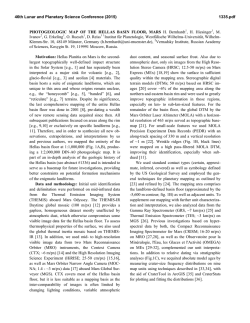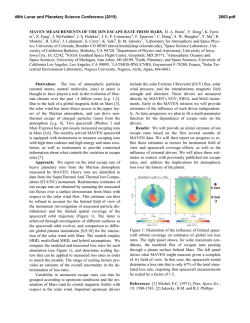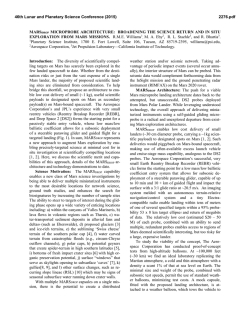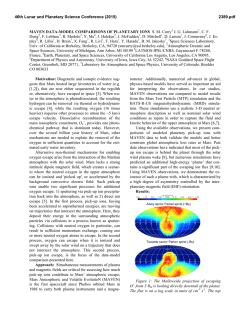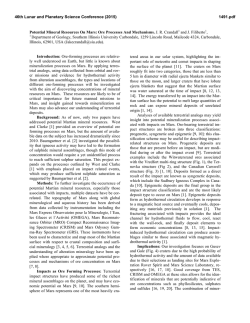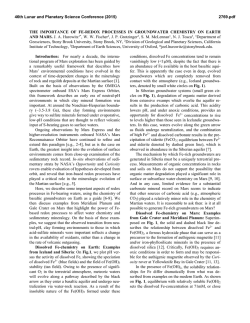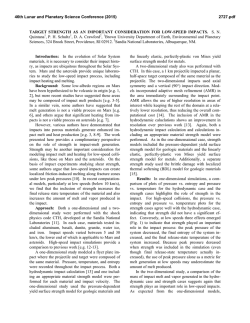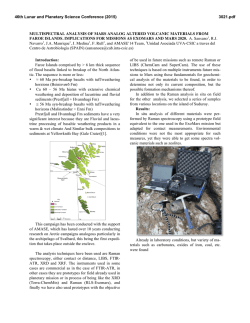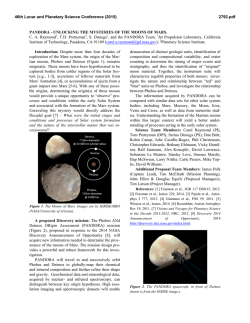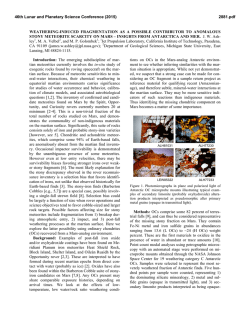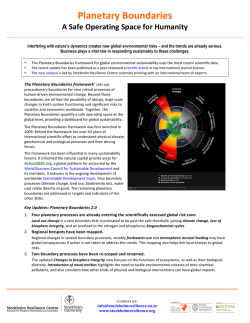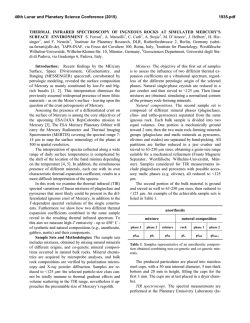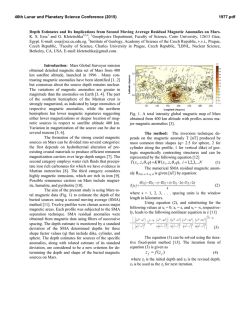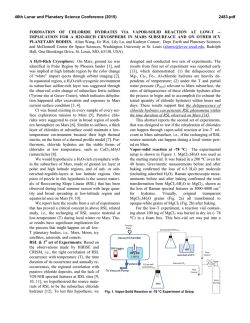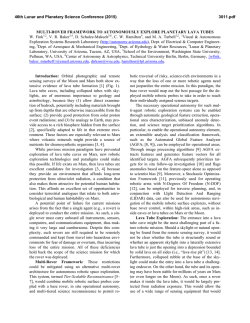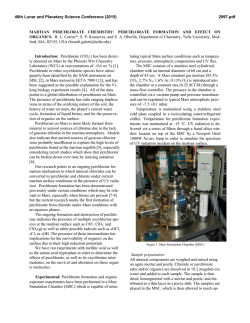
From Applied Field and Laboratory Geology to Planetary Science
46th Lunar and Planetary Science Conference (2015) 1870.pdf FROM APPLIED FIELD AND LABORATORY GEOLOGY TO PLANETARY SCIENCE - AND BACK. M. Boros-Olah1 and A. Kereszturi1,2, 1Nagy Karoly Astronomical Foundation, 2Research Center for Astronomy and Earth Science (Email: [email protected] ). Introduction: Several well known connections exist between Earth and planerary sciences [1-10]. Such interdisciplinary relations are aimed to exploit at the MTA CSFK (RCAES) in Hungary as a recently formed joint instiute. This abstract is to present those fields where the work has started (for specific details see cited references) and are prespectivitc using such synergy with the available facilites and background knowledge. The common issue of these topics is their analog aspect what covers wide range of activites (from remote sensing, across field work to micro scale laboratory analysis). Tthe new issue is that fresh knowledge and experience from planetary science might improve and provide feedback to classical Earth sciences too. Main topics of analog research where planetar science related knowledge helps Earth sciences can be seen in the Table 1. Several example exist where mission related information supported our knowledge in geology (surface modification from ephemeral flow events, low temperature alteration processes, handling of small specimen with minimizing the contamination). Specific interactions: The development and improvement during the analog activities improve mission related technology. Hyperspectral band shape positions got more accurate by standard production for planetary missions, in the mineral scale infrared analysis improved the understanding on how elemental substitution distorts crystalline structures in meteorite minerals, temperature, and compositional constrains of isotopic exchange also got improvement from laboratory analysis to understand processes in meteorites and hydrothermal fluids on Mars. In these cases “reverse” spin- off applications in modern geologic field and laboratory activites can be seen. Figure 1. Ideal workflow that starts from geological field work, though laboratory and related technology development supports Mars surface activity – the later improves Earth geological methods Acknowledgment: The support of the OTKA PD 105970 is acknowledged. References: [1] Catling (2004) Science 429, 707-708. [2] Moore et al. (2010) JGR 115(E6) E6009. [3] Groemer (2009) PSS 57, 660-663. [4] Titus et al. (2010) EOS 91, 281. [5] Heldman et ak. (2013) AGU #P54B-01. [6] Gupta et al. (2011) AGU #P42C01. [7] Gilichinsky (2011) AGU #C54A-05. [8] Hauber et al. (2011) AGU #C54A-03. [9] Westall (2008) EPSC p. 848. [10] Foing B. (2014) COSPAR F3.3-20-14. [11] Kereszturi (2014) PSS 101, 6576. [12] Kereszturi (2014) PSS 96, 35-50. [13] Tepliczky et al. (2002) LPSC #1656. [14] Krebsz et al. (2013) 76th MetSoc #5131. [15] Kereszturi (2012) PSS 72, 78-80. [16] Kereszturi et al. (2014) PSS doi:10.1016/ j.pss.2014.12.015. Table 1. Connections between Earth based research methods (2 nd) and planetary applications (3rd column) topic geomorphology remote sensing sediment transport laboratory work sample collection metasomatism research methods / examples (Earth based examle) morphometric analysis (shape, volume, slope angle, dimensions) / dust stratigraphy, mass movements DTM generation (satellite, airborn, drones), improvement in hypespectral data acquisitions (channel positions, noise filtering) loess analysis, deposit source region (heavy minerals), transport method (particle size, shape, imbrications) formation methods, identification of alteration conditions (element migration, OH content) protocol developments, storing, representativity, contamination, working with very small samples optical microscope, electron microprobe, IR and Raman spectroscopy / Fe-Mg ration in olivine planetary bodies / specific targets all planetary surfaces, even small bodies (asteroids, comets, TNOs) / dust transport [11] planetary surface analysis (Mercury, Venus, Moon, Mars, Io, Europa, Ganyledes etc.) / fluvial and sedimentary features, current occurrence of microscopic liqud water [12] Mars dust transport, “dust-stone” characteristics, Venus: transported particles, size specific transport [13] Mars, Moon, Mercury, icy satellites, asteroids / dust aggregation, alterational products (including airless bodies) [14] Mars, Moon, asteroids, meteorites / curation, similarities-differneces in processes+conditions in analog vs. real samples [15] meteorites, Mars / alterations in wet conditions, element migration, fluid circulation/diffusion in solid state [16]
© Copyright 2025
